The Chilean muralists who defied Pinochet
- Published
Members of the BRP speak out: 'We had paint and brushes against the machine guns.'
Walk around the side of the GAM, the main cultural centre in the Chilean capital Santiago, and you come across a striking mural, 25m (80ft) wide and 3m high, covering an entire wall.
In bold, bright colours, it shows a copper miner, a student, a fisherman and a member of Chile's largest indigenous community, the Mapuche.
Wander down the road to the headquarters of the CUT, the country's main trade union federation, and you find another mural overlooking a courtyard. This one tells the history of the country's workers.
Both walls are painted in the same distinctive style. The colours are primary and the faces - often indigenous in their features - are outlined in thick black lines.
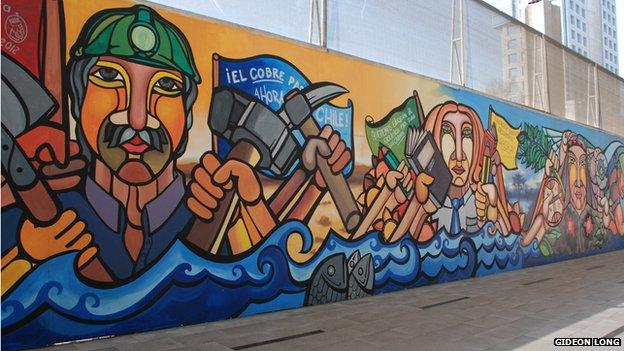
BRP murals can be found all over Santiago and often feature the Chilean working class.

Fishermen, copper miners and teachers all feature prominently on the mural next to Santiago's cultural centre.
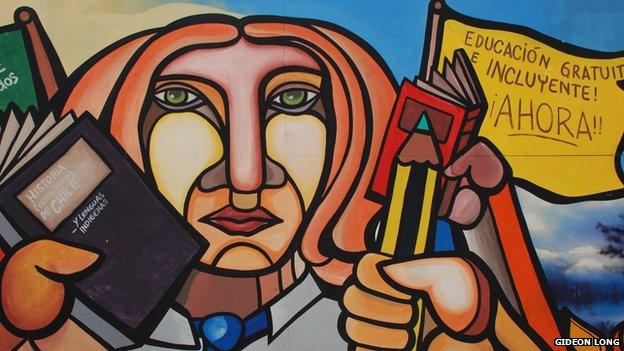
The demand for free and inclusive education which has led to mass student demonstrations over the past years in Chile is shared by the collective.
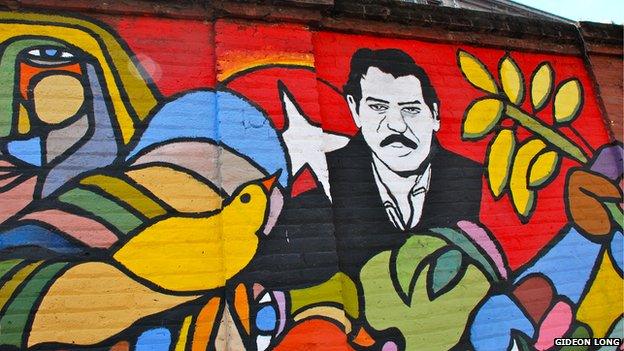
Other murals honour opponents of the Pinochet regime. Jecar Nehgme, a left-wing activist, was shot dead by Pinochet's forces in 1989. He was one of the last victims of the military regime.
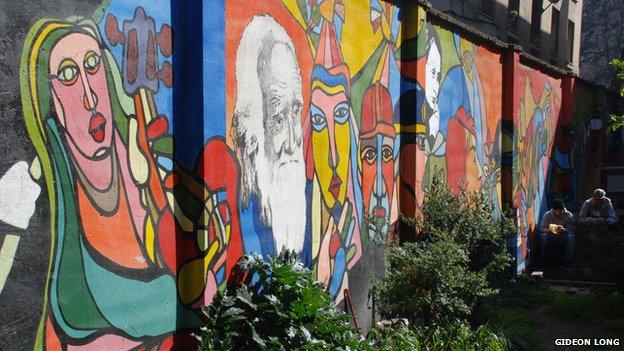
The collective's colourful murals also decorate the headquarters of Chile's main trade union federation, the CUT.
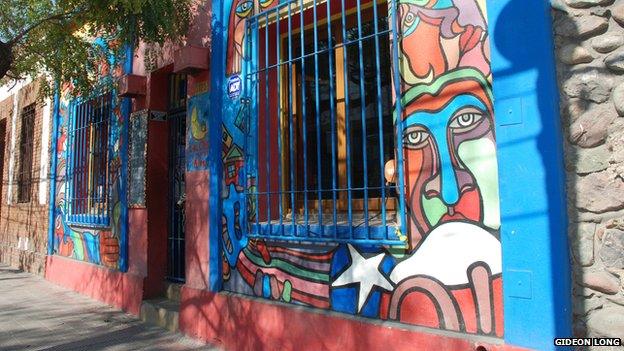
The BRP's murals are easily recognisable even when they are on a smaller scale such as decorating the facade of this Santiago bar.
The red, white and blue Chilean flag is used as a motif.
Both murals, and many like them elsewhere in Chile, are the work of the Brigada Ramona Parra (BRP), one of Latin America's most remarkable and resilient artistic collectives.
Founded in 1968 by a group of young Chilean communists, the BRP took its name from Ramona Parra, a 19-year-old woman shot dead by the police during a protest in Santiago in 1946.
Inspired by the revolutionary spirit of the late 1960s, the members of the BRP headed out onto Santiago's streets to paint. They saw murals not only as a way of brightening up the city's drab walls, but of fomenting radical social change.
'R' for resistance
In 1970, BRP propaganda helped propel the Socialist candidate Salvador Allende into the presidential palace.
But in 1973, their work was cut short. Gen Augusto Pinochet seized power in a military coup and the Communist Party was outlawed.
BRP activists were tortured and driven into exile. The military government painted over their murals.
The BRP went underground but continued to paint in defiance of the dictatorship.
"We worked clandestinely," says Juan Tralma, a founding member of the BRP.
"It was impossible to paint big murals so we would just paint a simple letter R, ringed by a circle with a star next to it. The R stood for resistance, the circle was a sign of unity and the star a symbol of the BRP."
"We had to keep our eyes peeled all the time," recalls Beto Pasten, another veteran member of the BRP. "The police could turn up at any moment.
"They'd come and kick over our paint pots, throw paint on our murals and arrest us. We'd do a mural at the weekend and by Monday they'd painted over it in black. Then the following week we'd come back and paint again, on top of their black paint."
With the return to democracy in 1990, the BRP came out of hiding, painting murals across Chile, Latin America and even as far away as Belgium, The Netherlands, Germany and Ireland.
To this day, the collective paints murals in Chile, championing contemporary causes like workers' and indigenous rights and the campaign for education reform.
Memories of the coup
On 11 September, Chile will mark the 40th anniversary of the coup. Mr Tralma, who was 26 at the time, remembers it vividly.
"We went out and chatted to the soldiers. I don't think they knew exactly what was happening. It was only when they started bombing the presidential palace, and corpses started to appear on the streets of Santiago, that we realised how serious it was."
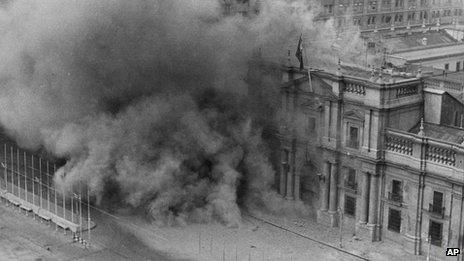
Military jets bombarded La Moneda palace during the coup led by Gen Pinochet
As the coup unfolded, the BRP split. Some young communists wanted to take on the military in open combat while others, including Mr Tralma, said it was too dangerous.
His view won the day and Mr Tralma, like thousands of other Chilean leftists, went underground, moving between safe houses to avoid detection. He finally escaped to Argentina where he lived for a decade.
Reflecting on the coup now, he says the BRP was right to retreat rather than confront General Pinochet's forces.
"It was a powerful, brutal dictatorship," he says.
"It would have been a massacre. We would have sent kids out onto the streets with paint brushes to confront men with machine-guns."